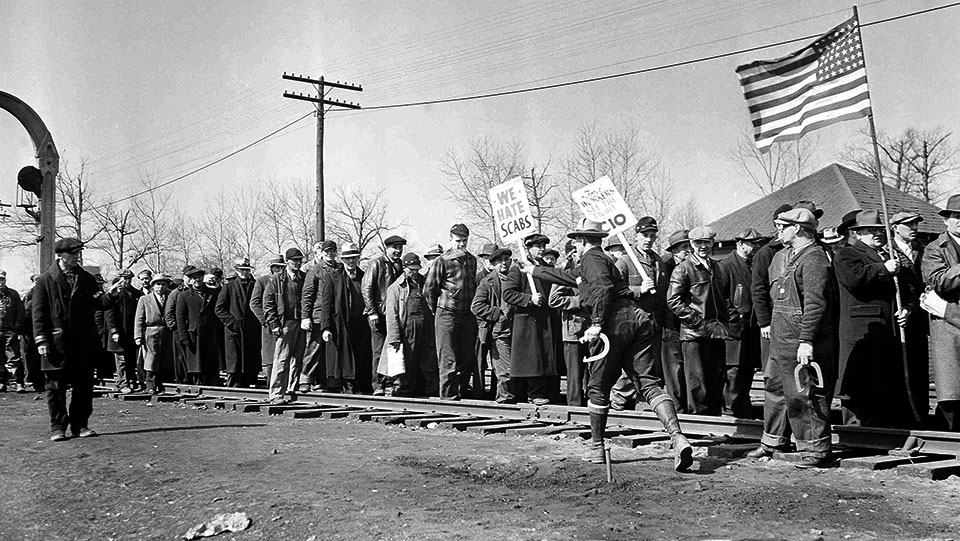
You remember the headlines:
“Biden asks Congress to avert rail strike, warning of dire economic impact,” (Reuters);
“Congressional Leaders Say They Will Act to Prevent Rail Strike…” – “Democratic and Republican leaders prepared to intercede as President Biden warned the prospect of a December strike put the U.S. economy ‘at risk.’” (The New York Times).
It was only little more than a month ago that President Biden pushed for and Congress passed legislation that forced railroad workers not to strike and return to work even though four unions had voted down a negotiated agreement.
The primary issue was the lack of a provision for paid sick days in a new contract, but deeper issues added to the workers’ grievances: long hours caused by reductions in the size of the workforce, safety concerns, and inadequate wages.
Much ink has been spilled over the “threat” that a railroad strike held for the U.S. economy. CNN reported in November:
“A strike would be a body blow to the nation’s still-struggling supply chain, as 30% of the nation’s freight as measured by weight and distance traveled, moves by rail…. The U.S. economy, which many think is at risk of tipping into a recession, would be severely damaged by a prolonged rail strike. Shortages of everything from gasoline to food to automobiles could occur, driving up the prices of all of those products. Factories could be forced to close temporarily due to the lack of parts they need.”
Other media outlets reported similar warnings.
What has been mostly overlooked in all these dire statements, though alluded to implicitly, is the power of the workers.
People have either forgotten that power or think about it in abstract terms. That is partly the result of the decline in the role of organized labor since the end of World War II. There have been innumerable examples of heroism over the years, but for the most part, the power in the U.S. economy has been with the capitalists and their minions in government.
From the passage of the Taft-Hartley Act, through the expulsion of Communists and other progressives from leadership in the labor movement, to the imposition of a neoliberal ideology that decimated the economies of countless cities and towns across the country in the pursuit of ever-greater profit, the working class has been on the defensive.
But we should not forget the power workers have shown in our history. Railway workers in 2022 followed in the steps of their predecessors, particularly those who took part in the Great Railroad Strike of 1877. Then, as now, working conditions on the railroads were poor, but a 10% pay cut by the railway bosses triggered a strike that stretched from the East Coast to the Mississippi River.
Governors in West Virginia, Pennsylvania, and Illinois called out the state militias. Eventually, the strike petered out, but not before 100,000 workers walked off the job—1,000 of whom went to jail and ten who died.
Grand examples of labor militancy, of course, were never limited to railroad workers. For example, in 1919, some 365,000 steel workers from Pittsburgh to Chicago went on strike. In the 1930s, auto workers staged sit-down strikes that forced General Motors to negotiate and recognize the union. Twice in American history, in Seattle in 1919 and Minneapolis in 1934, workers in many walks of life called general strikes.
And worker militancy goes beyond industrial unions. As recently as 2018 and 2019, teachers in West Virginia, Oklahoma, Arizona, North Carolina, and Colorado staged walkouts, many of which led to important reforms and improvements. The list is almost endless.
It is worth taking a moment as we begin 2023 to remember the inherent power workers have in our country and throughout the world. The bosses may have a lot of money and the weapons to enforce their will, but there are many more of us. When we stand together strong and proud, the future will be ours.
As with all op-eds published by People’s World, this article reflects the opinions of its author.










